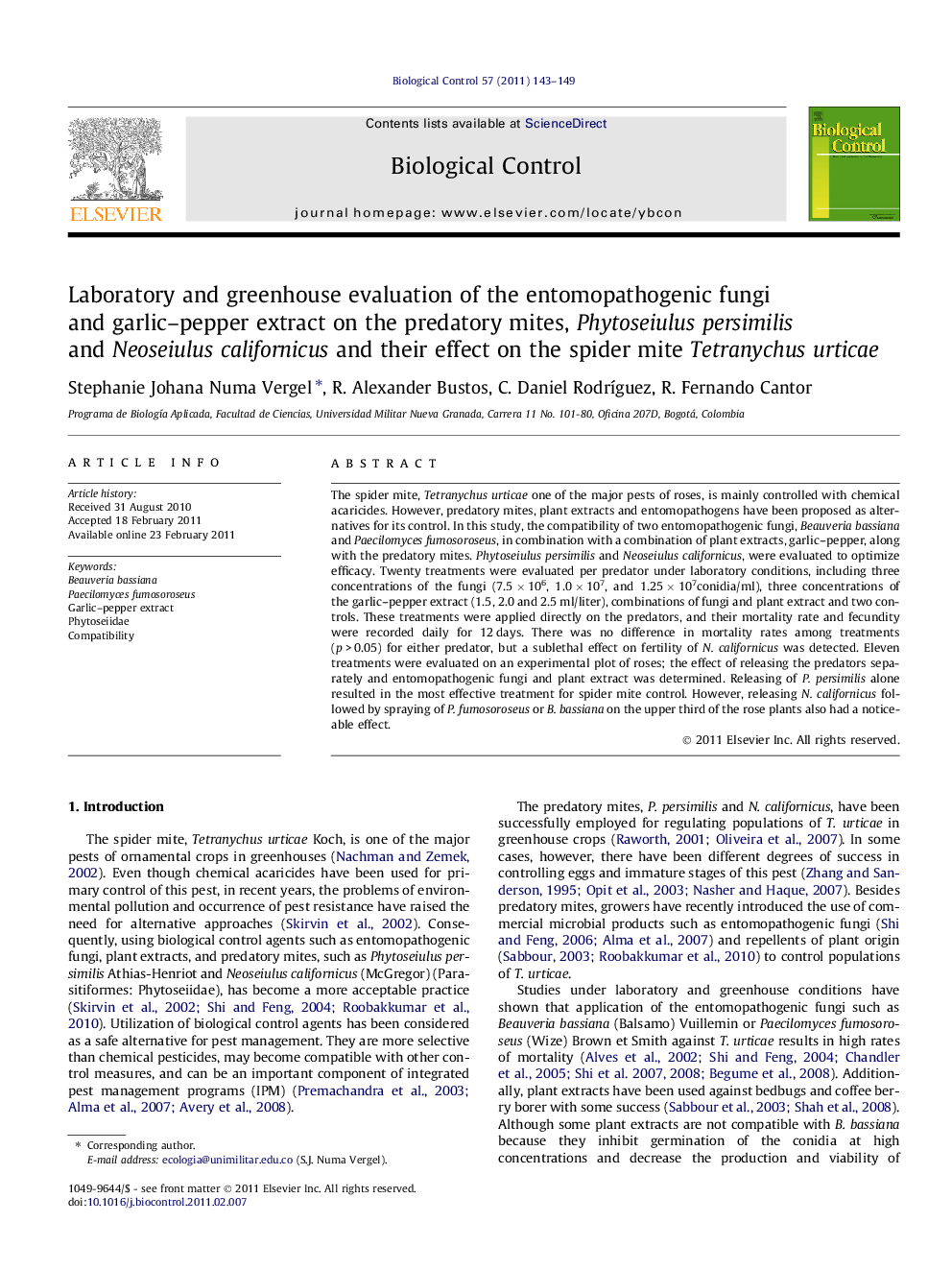| کد مقاله | کد نشریه | سال انتشار | مقاله انگلیسی | نسخه تمام متن |
|---|---|---|---|---|
| 4504211 | 1321078 | 2011 | 7 صفحه PDF | دانلود رایگان |

The spider mite, Tetranychus urticae one of the major pests of roses, is mainly controlled with chemical acaricides. However, predatory mites, plant extracts and entomopathogens have been proposed as alternatives for its control. In this study, the compatibility of two entomopathogenic fungi, Beauveria bassiana and Paecilomyces fumosoroseus, in combination with a combination of plant extracts, garlic–pepper, along with the predatory mites. Phytoseiulus persimilis and Neoseiulus californicus, were evaluated to optimize efficacy. Twenty treatments were evaluated per predator under laboratory conditions, including three concentrations of the fungi (7.5 × 106, 1.0 × 107, and 1.25 × 107conidia/ml), three concentrations of the garlic–pepper extract (1.5, 2.0 and 2.5 ml/liter), combinations of fungi and plant extract and two controls. These treatments were applied directly on the predators, and their mortality rate and fecundity were recorded daily for 12 days. There was no difference in mortality rates among treatments (p > 0.05) for either predator, but a sublethal effect on fertility of N. californicus was detected. Eleven treatments were evaluated on an experimental plot of roses; the effect of releasing the predators separately and entomopathogenic fungi and plant extract was determined. Releasing of P. persimilis alone resulted in the most effective treatment for spider mite control. However, releasing N. californicus followed by spraying of P. fumosoroseus or B. bassiana on the upper third of the rose plants also had a noticeable effect.
Figure optionsDownload as PowerPoint slideHighlights
► In this study we evaluated compatibility of predatory mites with biological products.
► Under laboratory study a sublethal effect on fertility of N. californicus was detected.
► On greenhouse, release P. persimilis was the most effective treatment for T. urticae control.
Journal: Biological Control - Volume 57, Issue 2, May 2011, Pages 143–149